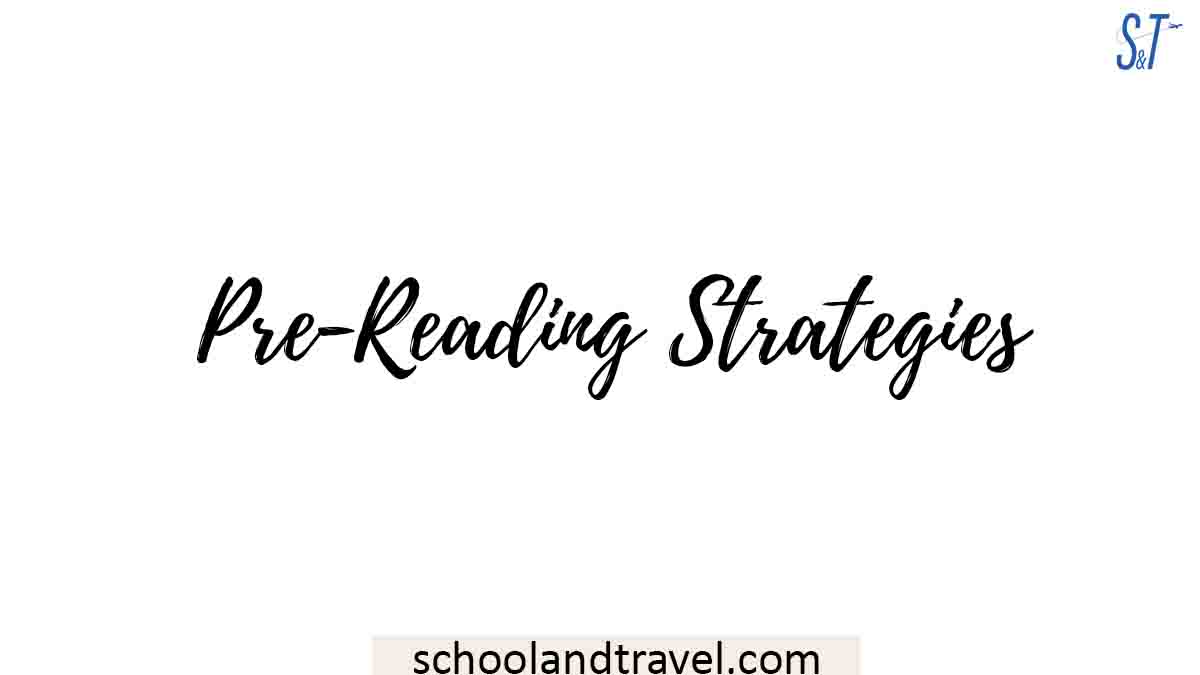Learning is paramount for everyone; as we grow daily, we’re meant to learn, unlearn and relearn things with Pre-Reading Strategies.
Not just for the sake of adding it to our vocabulary but also for using them in our day to day activities.
The preliminary stage of learning happens to be infanthood. Kids are meant to learn daily to build them up, so the reason for pre-reading strategies.
What are Pre-reading strategies?
Pre-reading strategies are learning approaches or techniques designed to help give your child structure, guidance, balance and background knowledge before they begin exploring a new text or a new challenge.
These strategies target your child’s reading and comprehension skills by giving them the necessary tools they need to become active and successful readers.
Reading and comprehending at a tender age is what young kids find exhausting.
Finding a kid that takes up reading as a passion is rare.
By activating the knowledge your child already has about certain subjects, learning how to utilize context clues and talking with you about the book, they’ll be on their way as champions to reading and writing scholarly essays in no distant time.
Basic Pre-Reading Strategies
Dad helps son with pre-reading strategies. As the name suggests, pre-reading strategies are used first before you begin reading a book with your child.
You can use a few primary strategies to help your child prepare to dive into any story or comprehension.
Previewing:
Previewing means letting your child gather clues, reviews etc from the book’s title and cover illustrations, inside illustrations, and maybe the table of contents for older children to try to figure out what might happen or what they might learn in a book they are about to hear or read before actually getting the real thing.
Purpose:
If you have time, it’s always great to put aside a moment for mindfulness before reading with your child. This is one of the most important basic pre-reading strategies.
Talk with them about what reading goals they still want to achieve after reading the book you bought for them.
Do they still need help with longer words or words with funny stress patterns (pronunciation)?
Do they want to work on their character voices or voice over (expression)? Getting their input will help you both come together to set a goal or purpose for your reading time together.
Predictions:
Using the resources available to your child, see if they can make predictions about what might happen in the story before they get a chance to read anything, like judging a book from its cover before even reading it.
What information can they gather just using the title, cover, and illustrations?
Read this: Underrated Parts of School You Should Focus on
Pre-reading strategies to try at home:
1) Speaking in Questions:
This is a fun activity that helps your child become more insightful about the text they’re reading while letting them joke about the said text.
You probably use the questionnaire routine with your kids at home, but the kid is meant to ask the question here. Your kid is entitled to ask any questions.
For example, if you’re reading Goldilocks and The Three Bears, you could start the question conversation by asking your child, “Why is her name Goldilocks?” Your child might ask back, “Why do these bears live in a house?”
See how many questions you can come up with within those interactive segments. Most times, there’s every tendency that the questions will be unanswered until you’re done reading the text.
2) K-W-L-H Chart:
This pre-reading activity was invented and made famous by Donna Ogle back in the 1980s.
It is one of the pre-reading strategies with different letters in K-W-H-L charts representing various tasks for your child to complete and compete with.
The “K” column is reserved for things your child already knows about the subject of the story they already read.
The key here is activating and then reflecting on their prior knowledge. For example, if they’re reading Charlotte’s Web, what do they already know about pigs according to the book?
The “W” category is for what your child wants to know about the story. What are they curious about as to find out.
The “L” (what they learned from the story) in the course of reading.
The “H” columns (how they can find out more ) is reserved for discussion after you’ve finished reading the book.
The last row, how they can find out more, is more important in nonfiction than fiction. It’s quite advisable to use non-fictional books for this purpose.
The fun of this exercise is to physically get the child to do this rather than taking it as an assignment.
3) Pre-Teach Vocabulary:
If you know that the book you’ll be reading together will challenge your child’s current reading skills, consider teaching them a handful of the more challenging words ahead of your reading time to enable a fluent flow.
4) Pre-Reading Strategies: Pre-Teach Themes
Many children’s books set out to teach children more than new words. They usually have moral lessons embedded in their pages as well to aid in real-life moral teachings.
To get your child’s mind focused on the book’s theme, you could prompt them by discussing the same moral lesson the book they read has and relate it to a real-life scene.
See what their initial opinion is about, their interpretation and check if they have a strong sense of it already, or do they want to learn more?
Read this: How old are you in 10th grade (Best Answer)
5) Word Bingo:
This game is another excellent option for getting your child’s mind prepped to learn vocabulary or brush up on sight words they need extra help trying to fix or gain.
If you’d like to try this pre-reading activity, create a Bingo sheet using words from the text before the reading time.
Every time you or your child hears or sees a word that matches one on your sheet, place an emoji on it. The first one to yell out, “Bingo!” wins instantly.
Conclusion:
It’s paramount that kids undergo Pre-reading stages in life before going deep into life pursuit. Parents are encouraged to send kids to tutors that can train their kids rightly.
Awesome one; I hope this article answered your question.
Share this Information.
Editor’s Recommendations:
- How to Create a Balanced Plate: The Key to Healthy Eating
- How to Start a Virtual Book Club with Friends
- The Top Credit Score Hacks Every Young Adult Should Know
- The Pros and Cons of Rental Property as a Passive Income Stream
- Enhancing Your Clinical Psychologist Job Prospects with Professional Help
- The Impact of Graphic Design School on Your Future Earnings Potential
- 7+ College Scholarships for Muslim Students (FAQs)
- Flavor of the Month Scholarship 2024 (Requirements, FAQs)
- Vegetarian Scholarship (Requirement, Deadline, FAQs) | 2025
- John and Abigail Adams Scholarship 2022-2024 (Eligibility, Deadline)



